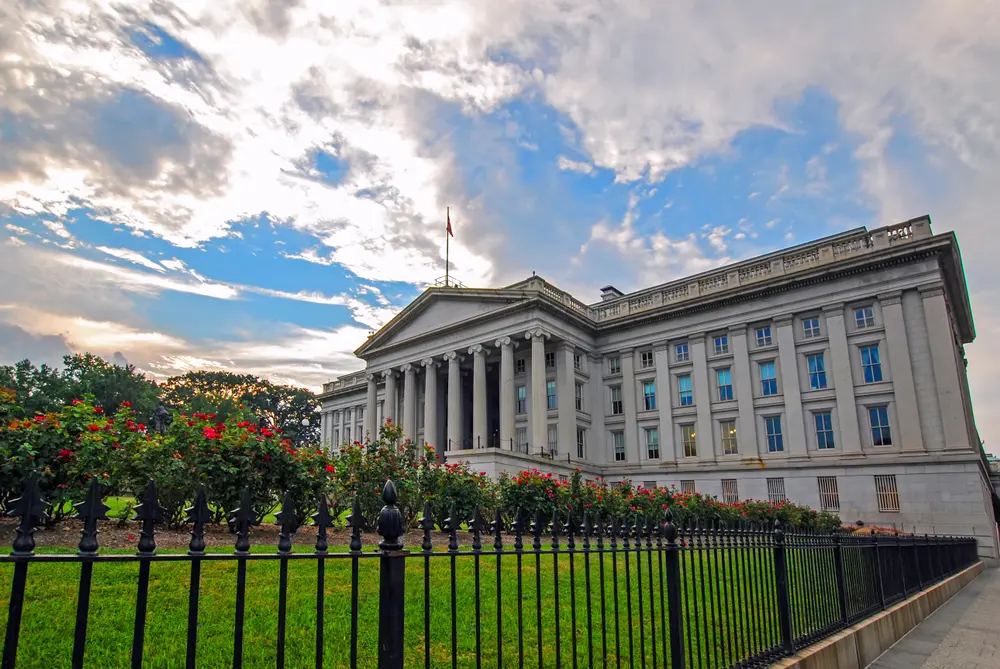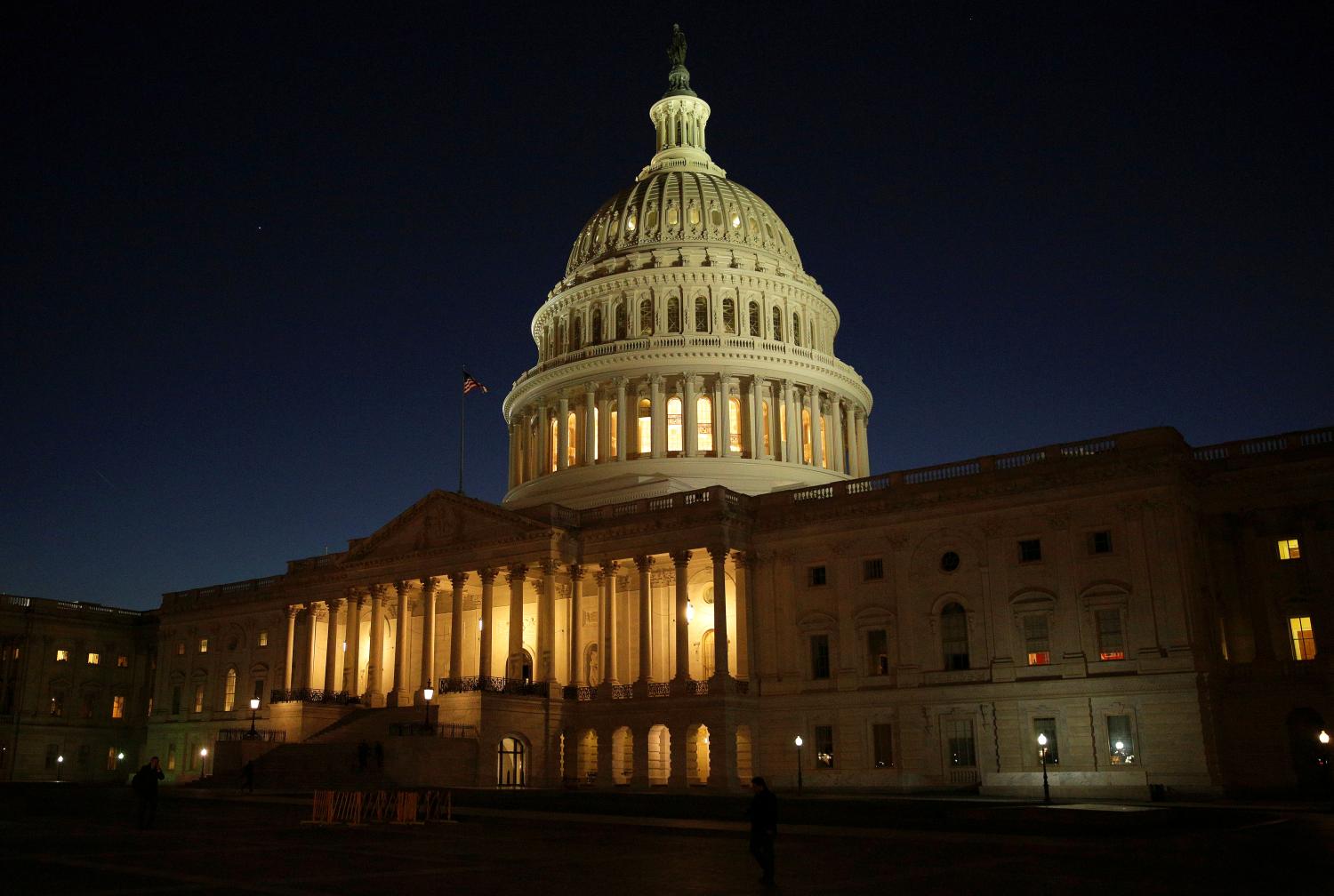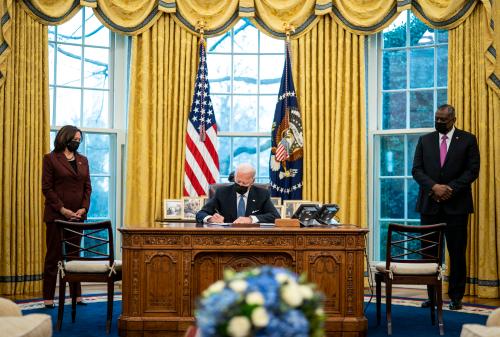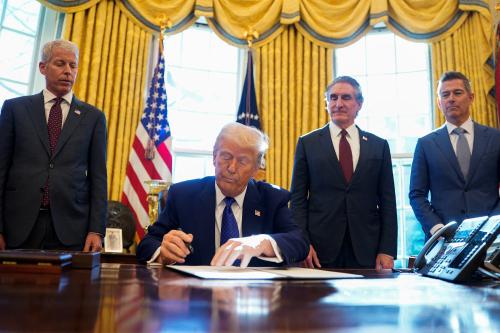Federal agencies perpetually confront the problem of ensuring that the regulations they adopt work as anticipated. Largely for this reason, every presidential administration since at least the late 1970s has undertaken a program to review existing regulations, often termed “retrospective review.” While retrospective review may improve the federal rulebook, it also consumes scarce agency time and resources. If done poorly, it may also lead to disruptive and welfare-reducing rule changes. Grappling with these basic tradeoffs, agencies and scholars have sought to identify an optimal level of retrospective review, but there is no single approach or formula.
In the final weeks of the Trump administration, the U.S. Department of Health and Human Services issued a final rule to implement a far-reaching approach to retrospective review that is unprecedented in the federal government. The rule would have required the agency to examine most of its rules every decade, determine whether each regulation is “significant” to small businesses and other small entities, and conduct a review of any significant regulation to determine whether it is still needed. Significant regulations would have automatically expired (or “sunsetted”) if the agency did not assess and, where required, review the rules by the deadline. The sunset rule, moreover, would have applied to thousands of existing regulations in addition to regulations promulgated after the rule’s adoption. According to the agency, the sunset rule sought “to increase transparency, public participation, and democratic accountability,” and the agency promised that it could have conducted “the required assessments and reviews” of the thousands of regulations on the books “at little cost.”
The radical, blunt operation of the sunset rule would have functioned like a vivisection as a cure for a common cold, but it is unlikely to be implemented by the Biden administration.1 It is nevertheless worth scrutinizing the rule, as a future administration might well try to adopt a similar action. In anticipation of a similar rule becoming effective sometime in the future, agencies that wish to prevent their new rules from being automatically sunsetted should carefully consider steps that they can take in anticipation of those future sunsetting efforts.
Below, we discuss two likely legal challenges the sunset rule would have faced because those challenges can provide guidance to agencies that wish to guard their new rules against future automatic sunset provisions. We then offer suggested language that agencies could consider to help protect future rules from automatic sunset efforts. Finally, we outline what we believe are more promising alternative methods of retrospective review. Agencies that follow these more modest, targeted approaches may be less likely to face an automatic sunset proposal down the road while also better achieving the worthy goals of retrospective review.
The Sunset Rule and Some Likely Legal Challenges
The sunset rule would have applied to most existing and future Department regulations by establishing that any regulation having a significant economic impact on a substantial number of small entities would expire ten years after issuance unless the agency assessed: (1) the continued need for the regulation; (2) complaints about the regulation; (3) the regulation’s complexity; (4) the extent to which the regulation duplicates or conflicts with other regulations; and (5) whether technological, economic, and legal changes favor amending or rescinding the regulation. All regulations finalized before 2011 would have needed to be reviewed within five years of the effective date of the sunset rule. Regulations the agency determined should be amended or rescinded under this process would have had to go through a separate notice-and-comment rulemaking process. But rescission-by-inaction would have automatically occurred if the agency did not take the required steps in the allotted time.
The sunset rule would have faced several serious legal challenges. We highlight two such challenges that provide important insights for agencies as they consider ways to protect their rules from possible future sunsetting requirements.
First, an agency generally must go through the same rulemaking process to rescind a rule as it would to promulgate a new rule, including public notice of the agency’s explanation for changing policy and the opportunity to comment. The sunset rule, however, would have given the agency carte blanche ability to rescind a rule without notice and comment if the agency decided not to take the necessary steps to avoid sunsetting. That rescission-by-inaction would be vulnerable to a challenge that it draws no support from any statute or precedent; it deprives the public of the chance to comment on rescission of a particular rule; and it inverts the basic principle that a rule generally stays on the books absent an affirmative agency determination—after notice and comment and reasoned decision making and consideration of alternative approaches—that rescission is warranted.
Second, the sunset rule would have applied to already-final regulations. A challenger could have argued that, by doing so, the final rule in essence would have imposed a limitation on duration not intended at the time the original regulation was promulgated without adequate justification and opportunity for public comment. This type of automatic expiration differs in kind from other types of conditional expiration dates agencies sometimes embed and justify in specific rules at the time they are promulgated.
We offer no prediction whether these two challenges would have succeeded. But they will be important to consider as agencies decide whether and to what extent to try to insulate their rules from future sunsetting efforts.
Planning for Future Sunsetting Efforts
Agencies that want to protect their newly adopted rules should think about what they can do now in anticipation of likely future regulatory sunsetting efforts. We offer one such proposal: Agencies should consider including in new regulations a clear anti-sunset statement indicating that the agency adopted the regulation with the expectation that it would not expire absent a future rulemaking rescinding that particular rule. Although the language might vary depending on the nature of a particular regulation, the following template should help guide the process:
The agency is promulgating this rule based in part on its prediction of the specific costs and benefits of this rule. The agency believes that its estimates are accurate but recognizes the inherent uncertainty of any prediction. The agency wishes to make clear that, if the actual costs and benefits vary from these estimates, it does not intend for this rule to automatically sunset. Instead, the agency retains the opportunity to reevaluate the rule in the future based on a context-specific analysis of the facts and circumstances that led to the regulatory impact differing from the initial prediction.
An agency using this sort of language affirms that its rules should not automatically expire at some date in the future. The Supreme Court has stated that it would be arbitrary or capricious for an agency to adopt a new policy inconsistent with prior policies without justification, at least when the new policy “rests upon factual findings that contradict those which underlay its prior policy” or “when its prior policy has engendered serious reliance interests that must be taken into account.” As a result, this type of clear anti-sunset statement should force any future sunsetting efforts to engage with the agency’s prior decision and justify the change in course. Such a statement also increases the likelihood that a court will conclude that a particular rule must be rescinded through an agency action specific to that rule rather than as part of a generalized effort to sunset certain categories of rules absent affirmative action by the agency.
More Promising Methods of Retrospective Review
Retrospective review is a worthy goal. As the sunset rule demonstrates, however, an agency that does not engage in carefully calibrated retrospective review risks imposing real costs on the public and the parties the agency regulates, to say nothing of taxing the agency’s own resources and curtailing its ability to engage in more fruitful endeavors.
There is no agreed upon approach to foster retrospective review of rules. The Administrative Conference of the United States has issued useful guidance, but its recommendation does not bind any agency. The Regulatory Flexibility Act sets forth a limited process for reviewing certain rules. And the Administrative Procedure Act includes a provision instructing agencies to give individuals the “right to petition for the issuance, amendment, or repeal of a rule,” but it too does not set forth a particular way in which agencies should or must engage in retrospective review. We now briefly mention three other ways to help ensure that agencies take retrospective review seriously.
- An agency can issue an open call asking: “What rules should we review because they do not work as predicted?” This invitation could then commit the agency to review any regulation for which it receives a relevant comment. This open call would allow for a more participatory approach to regulation, with the public letting agencies know which regulations might not operate as predicted. But it would not result in rescission-by-inaction or dissipate agency resources on review of regulations that apparently work as intended. This is not a perfect approach because a collective-action problem may deter individual entities from investing the resources to advocate for changing rules with broader, more dispersed impacts. Still, agencies have previously committed to these types of participatory reviews that allow interested parties to be involved in retrospective review.
- Agencies can commit to reviewing rules at the time of their adoption. For this to be meaningful, agencies should attempt to incorporate metrics for retrospective review and should create a plan to measure and assess whether the rule meets those metrics. This process is difficult and time-consuming but has the additional benefit of possibly improving the quality of the initial rule by requiring the agency to be clear about its goals.
- Congress could create a commission filled with public-policy experts that would report on agencies’ retrospective review work, examining agency efforts throughout the federal government. This would have the virtue of encouraging Congress to review rules on its own accord, which is appealing given the level of congressional inaction and also the extent to which Congress has delegated to agencies. The specter of congressional oversight may also encourage agencies to be more diligent in reviewing their rules.
Conclusions
Agencies will continue to grapple with the best way to review the effectiveness of their rules. While the recent rule to automatically sunset all rules in the Department of Health and Human Services strikes the wrong balance and will likely never take effect, we expect similar efforts in the future. Agencies should therefore plan now to both protect their rules against automatic sunsets and implement better targeted approaches to retrospective review.
The SEC disclaims responsibility for any private publication or statement of any SEC employee or Commissioner. The article expresses the authors’ views and does not necessarily reflect those of the Commission or other members of the staff.
The authors did not receive any financial support from any firm or person for this article or from any firm or person with a financial or political interest in this article. They are currently not an officer, director, or board member of any organization with an interest in this article.
-
Footnotes
- The sunset rule was not scheduled to take effect until 60 days after publication in the Federal Register. But the new administration directed agency heads to consider whether to freeze regulations from the prior administration not yet in effect. And Congress could in any event repeal the rule through the Congressional Review Act.
The Brookings Institution is committed to quality, independence, and impact.
We are supported by a diverse array of funders. In line with our values and policies, each Brookings publication represents the sole views of its author(s).









